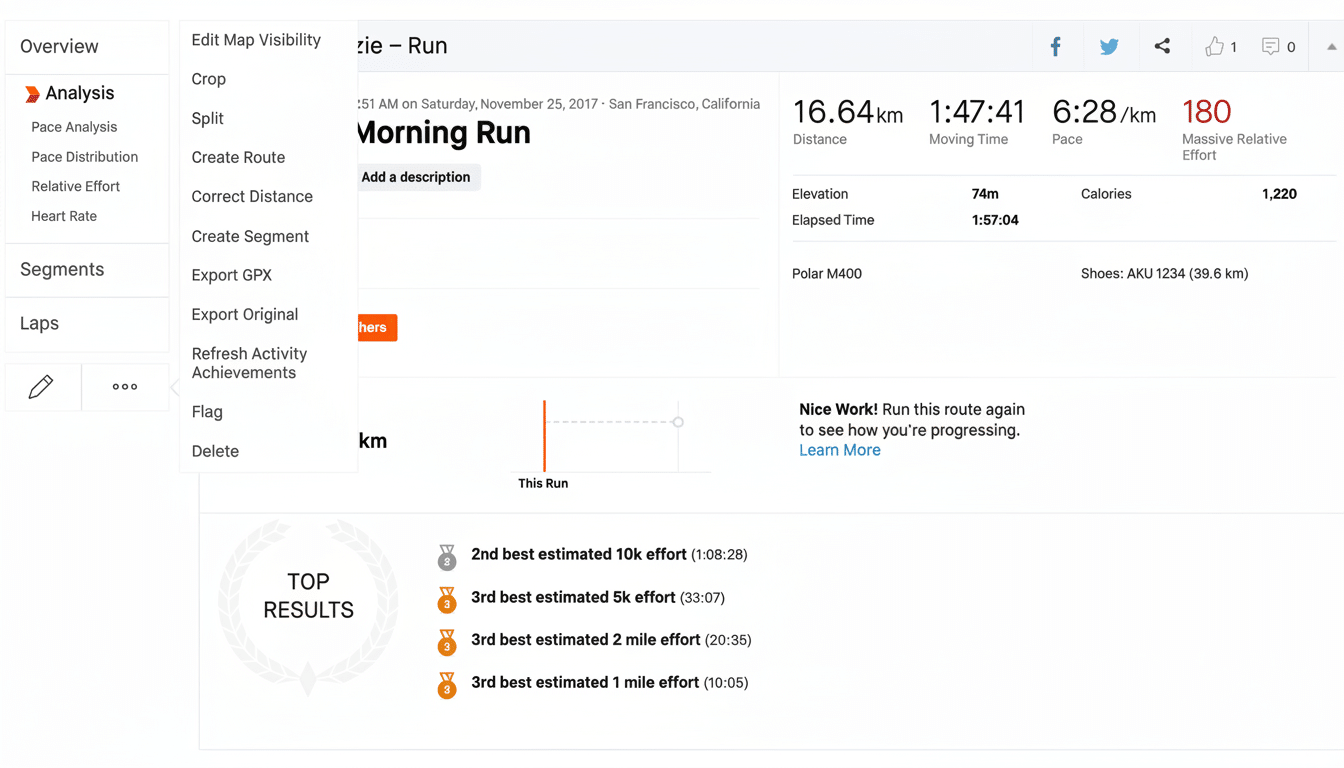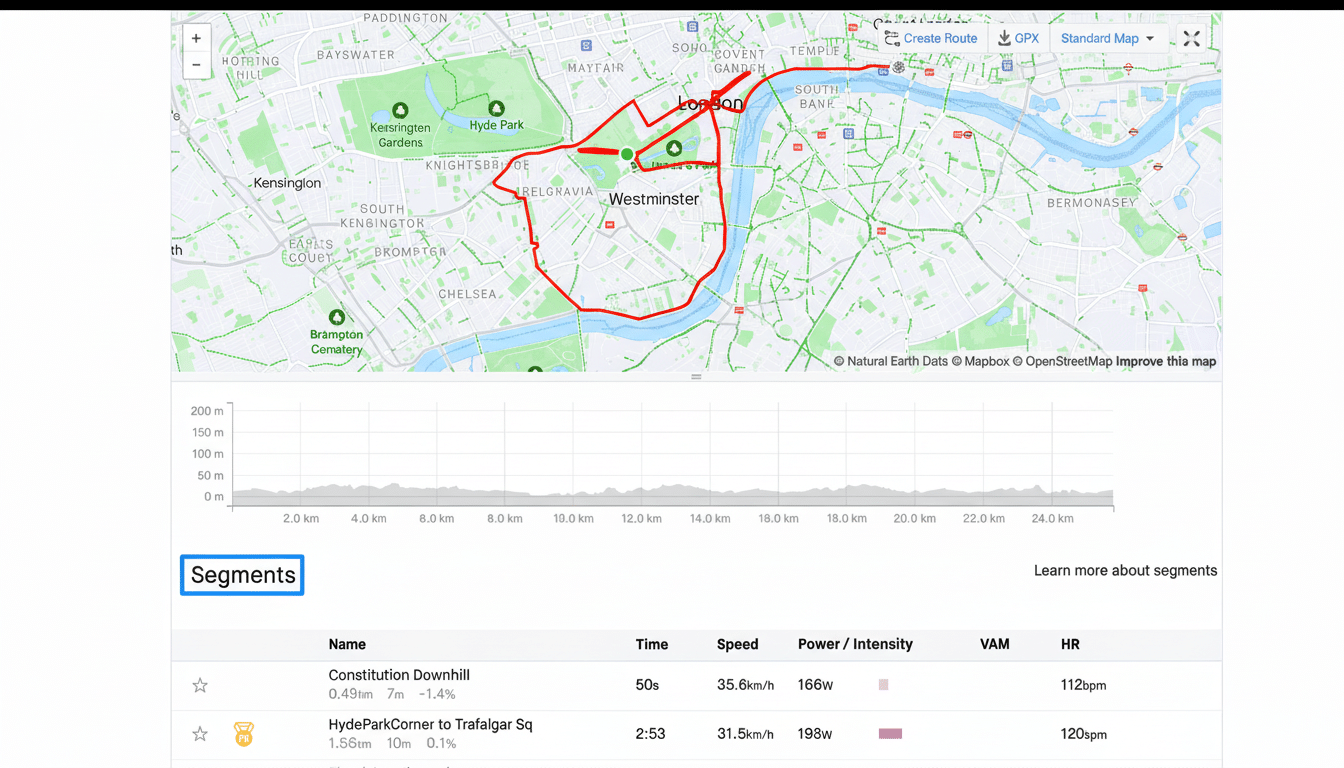Two of the largest names in endurance tech are going to court. Strava has sued Garmin over a pair of core features it says were born out of Strava’s own technology, segments and heatmaps, and form the foundation for its popularity among millions of athletes. The filing asks for an injunction and has the potential to require Garmin to alter or disable features in popular devices as well as on the Garmin Connect app.
What Strava Says Garmin Stole: Segments and Heatmaps
The complaint focuses on two modern pillars of training software. Segments cut through timed stretches, allowing runners and cyclists to compare efforts to their past performances, as well as a larger leaderboard. Heatmaps provide a visualization of 90 days of Strava activities in an area and are built to aggregate data from all Strava athletes, making it easy to find the most popular roads or trails as well as commonly ridden climbs.

Strava argues that this functionality is protected by its U.S. patents, and that Garmin based materially identical features on Strava’s work without permission. The argument also sucks in some of Garmin’s segment experiences on its Edge cycling computers and certain watches, as well as routing tools like Trendline Popularity that are based off of the aggregated usage data to recommend routes.
Plainly put, Strava says it invented the playbook for social competition on routes and crowd-sourced route intelligence — and Garmin built its own versions in ways that constitute trespasses.
What’s At Stake For The Next Everyday Athlete
But the point is that segments and heatmaps are not niche tools. Strava says it has a community of more than 100 million athletes who record billions of activities per year. Industry trackers like IDC rank Garmin as one of the top global sports watch and cycling computer makers. Should a court decide to grant an injunction, you could see it have a sweeping effect for users who’ve built their training — for roadies, trail runners, commuters and triathletes alike — around real-time segment prompts or popularity-based routing.
Even without an injunction, uncertainty can be costly. Developers can throttle feature updates, or athletes might notice minor shifts in how segments are surfaced or how route recommendations are made. For end users, the threat is not so much about losing historical data as it is about real-time experiences on devices and with companion apps.
Business Context and API Frictions Between the Brands
It was a marriage of rivals long in the making. Strava’s Live Segments have been showing up on Garmin devices through integration partnerships, and then of course athletes are used to syncing workouts from their Garmins to Strava for analysis and social posting. Strava now says Garmin went beyond the parameters of those partnerships by developing features that infringe on patented territory.
Add to these tensions new API policies. Strava leaders have publicly voiced concern over new Garmin API guidelines that would force partner apps to display Garmin branding while accessing its data pipelines. Though branding rules are not uncommon in platform ecosystems, Strava seems to see the move as leverage that could tip user perception and chip away at Strava’s ownership of its experience.

The legal complaint also cites financial damage. For a subscription-based business, anything that muddies the waters of Strava’s unique value versus device-native functionality can pose a conversion and retention risk. That’s even more useful when hardware makers can surface insights from that training directly to the wrist or put some advice on the handlebar — without forcing users into a back-and-forth with a third-party app.
Risk And The Ripple Effect On An Industry
Patent trials frequently end in settlements instead of full-blown trials. One likely avenue would be some form of licensing deal or cross-licensing agreement that allows Garmin to retain key features while paying Strava. Willful infringement also can lead to enhanced damages, should a court find them warranted, but the bar is higher.
Whatever the result, competitors like Wahoo, Polar and Coros — as well as platforms that also depend on aggregated activity data and segment-style experiences such as Komoot and Ride with GPS — will be watching it closely. A strong ruling for Strava could put the squeeze on how competitors develop crowd-sourced routing and competitive leaderboards; a win for Garmin would make it more appealing for device makers to build without app partners.
There’s a larger platform lesson here as well: when data, network effects and real-time coaching come in contact, the line between your social fitness software and your device firmware becomes fuzzy. Licenses, APIs and trademarks may actually be the only durable peace.
What Athletes Can Do Now to Prepare for Changes
Don’t panic. Even in hostile cases, features don’t suddenly disappear overnight. Maintain up-to-date firmware and apps, back up your rides, and keep an eye out for official notices from both companies. In the event that a route becomes unavailable (or, suddenly, stops working as intended), all is not lost: you can create in one and import to another, or rely on community-sourced routes from local clubs.
For now, anticipate no more than cautious sound bites on both sides. Strava has stated its claims; Garmin has refused to comment for industry reporters like DC Rainmaker. The next steps — court filings, possible motions for a preliminary injunction and early signs of settlement talks — will decide just how brief this skirmish is or if it becomes an industry-defining case.

